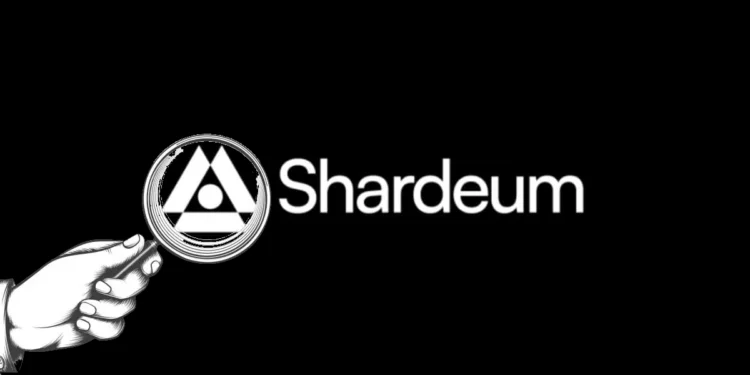As blockchain technology continues to evolve, scalability remains one of its most pressing challenges. Shardeum, an Ethereum Virtual Machine (EVM)-compatible, autoscaling blockchain, is addressing this problem head-on. With the highly anticipated launch of Phase 3 of its incentivized Atomium Testnet, the project is set to take another big leap toward building a more efficient, decentralized future. This phase is expected to be a critical test of the platform’s scalability, security, and user adoption as it gears up for its mainnet launch.
What is Shardeum?
Shardeum is a layer-1 blockchain designed to provide high throughput without sacrificing decentralization or security. It uses sharding, a technique that breaks data into smaller pieces (called “shards”) to improve the efficiency and scalability of the blockchain. Unlike many traditional blockchains, Shardeum’s autoscaling mechanism ensures that as demand on the network increases, so does its capacity to handle transactions. This allows for a linear scaling of TPS (transactions per second), ensuring low fees and quick transaction speeds even as the network grows.
The Significance of Atomium Testnet
The Atomium Testnet is an important step in Shardeum’s roadmap. It is an incentivized testnet, meaning users who participate in testing can earn rewards in the form of SHM tokens, Shardeum’s native cryptocurrency. These rewards incentivize developers, testers, and validators to actively engage with the network, helping to identify potential issues and improve performance.
Phases 1 and 2 of the Atomium Testnet have already been completed, with over 540,000 users and more than 5 million transactions processed across these phases. Phase 3 is expected to push the network even further, offering new features and testing under more strenuous conditions.
What’s New in Phase 3?
Phase 3 of the Atomium Testnet will introduce several key features aimed at improving the overall user experience and network performance:
- Expanded User Base: While previous phases tested the network with a limited number of participants, Phase 3 will open the doors to more users, further stress-testing the network’s scalability. This phase is crucial in ensuring that Shardeum can handle mass adoption in real-world scenarios.
- Increased Transaction Volume: With more users on board, transaction volume will increase significantly. This will allow the Shardeum team to analyze how the network responds to higher loads and whether it can maintain its promise of low-latency transactions.
- Refined Security Protocols: Phase 3 will focus heavily on testing the network’s security, particularly against potential attacks. With higher adoption, security becomes a greater concern, and Shardeum aims to prove that its autoscaling and sharding technology doesn’t compromise safety.
- New Developer Tools: Developers will be provided with enhanced tools to create decentralized applications (dApps) on Shardeum. These tools will allow for easier integration and deployment, making Shardeum more accessible to both seasoned blockchain developers and those new to the ecosystem.
Why is Shardeum’s Autoscaling Important?
One of the key features that set Shardeum apart from other blockchains is its autoscaling ability. Most traditional blockchains face significant bottlenecks when usage spikes, leading to network congestion and higher fees. For example, Ethereum and Bitcoin have both experienced scaling issues during periods of high demand, resulting in slow transaction speeds and exorbitant transaction costs.
Shardeum’s approach eliminates this issue by automatically adjusting its resources based on network demand. This means that as more users interact with the blockchain, its capacity to process transactions scales up, ensuring consistently low transaction fees and faster confirmation times. This autoscaling feature makes Shardeum particularly well-suited for decentralized finance (DeFi) applications and NFTs, which require fast, low-cost transactions to function effectively.
What Does This Mean for Developers?
For developers, Shardeum offers an EVM-compatible environment, which means that they can easily migrate or build applications using the same tools they would for Ethereum. This lowers the barrier to entry and fosters innovation, as developers don’t need to learn new programming languages or frameworks to get started on Shardeum.
Moreover, the launch of Phase 3 of the Atomium Testnet gives developers the opportunity to test their applications in a real-world setting before the Shardeum mainnet goes live. Those who participate can help shape the future of the network while also earning incentives for their contributions.
How to Participate in Phase 3
If you’re interested in being part of this major milestone, participating in the Shardeum Atomium Testnet Phase 3 is relatively straightforward. Here’s how you can get involved:
- Sign Up for the Testnet: Visit Shardeum’s official website to sign up for the Phase 3 Testnet. You’ll be provided with guidelines on how to participate and potentially earn rewards.
- Set Up a Validator Node: If you’re interested in becoming a validator, you’ll need to follow specific instructions to set up a node. Validators are crucial for maintaining network security and ensuring that transactions are processed efficiently.
- Develop and Test dApps: Developers can start building decentralized applications (dApps) on Shardeum using the provided tools. By participating early, developers can gain firsthand experience with the platform and contribute to its ecosystem.
- Provide Feedback: One of the most valuable ways to contribute is by providing feedback on your experience. Whether you encounter bugs, performance issues, or simply have suggestions for improvement, your input will help the team refine the network ahead of its mainnet launch.
The Road Ahead for Shardeum
As the Shardeum team continues to push the boundaries of blockchain scalability, the successful completion of Phase 3 of the Atomium Testnet will mark a significant milestone. If Shardeum proves its ability to scale while maintaining low costs and strong security, it could become a major player in the blockchain space, particularly for applications that demand high throughput, such as DeFi and NFTs.
With its innovative autoscaling technology and commitment to decentralization, Shardeum is poised to address some of the most pressing challenges in the blockchain industry. The upcoming testnet phase will be a key indicator of how well Shardeum can handle real-world use cases and mass adoption, setting the stage for a highly anticipated mainnet launch.




